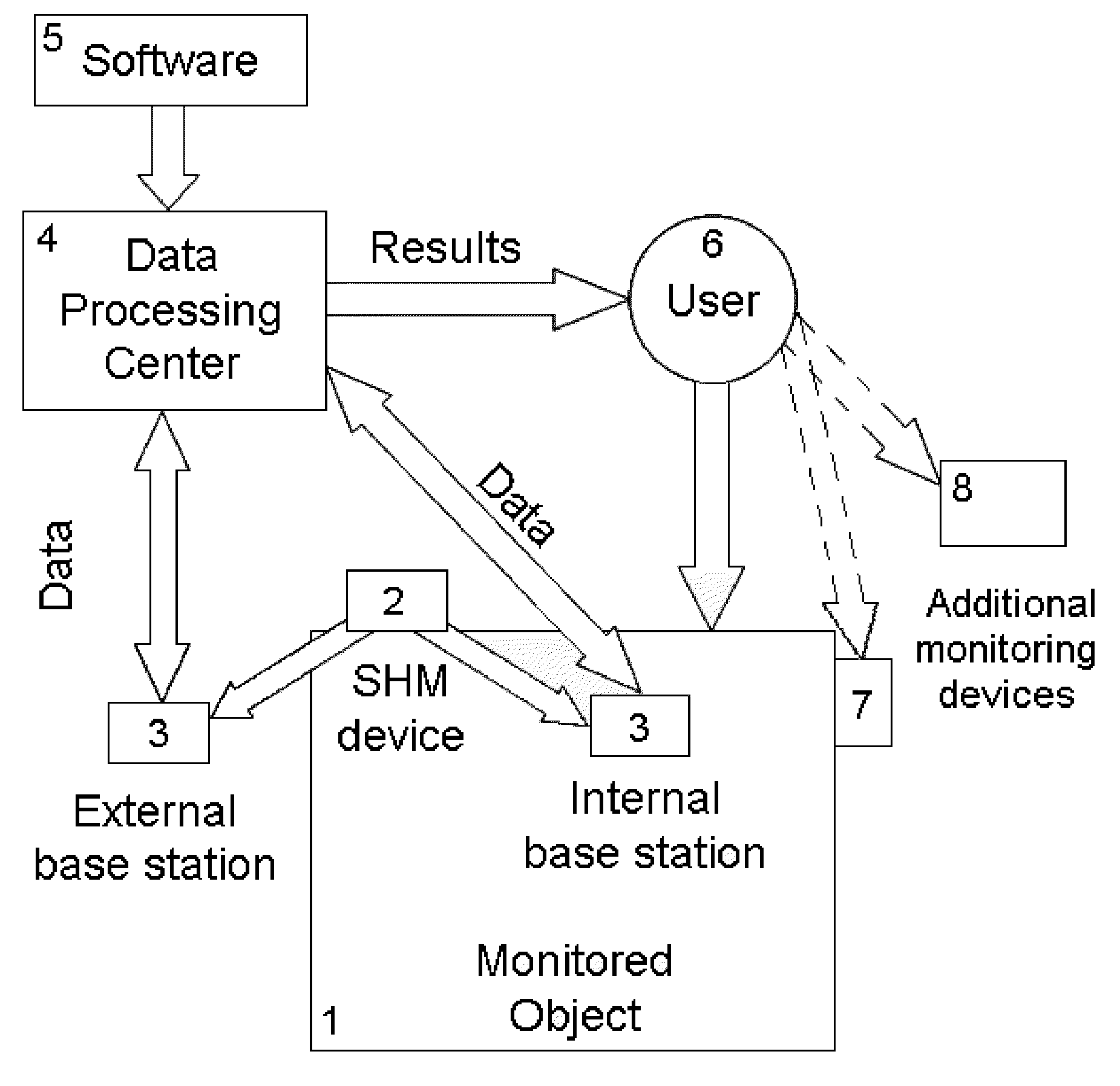Autonomous sensing module, a system and a method of long-term condition monitoring of structures
a technology of autonomous sensing and monitoring structure, applied in the direction of instruments, process and machine control, anti-theft devices, etc., can solve the problems of loss of harvest, insufficient information about the condition, wide variety of dangerous and/or undesirable events
- Summary
- Abstract
- Description
- Claims
- Application Information
AI Technical Summary
Benefits of technology
Problems solved by technology
Method used
Image
Examples
Embodiment Construction
[0029]Autonomous Sensing Module
[0030]FIG. 1 shows a block diagram of an autonomous sensing module (ASM) for long-term condition monitoring of a structure, landform, environmental monitoring, monitoring of agricultural facilities and fields and monitoring of objects of nature. The ASM contains at least one sensor 1, a non-volatile memory 2 and a wireless data transfer unit 3—all controlled by a microcontroller 4. The microcontroller 4, the set of sensors 1, the memory 2, and the wireless data transfer unit 3 can work in two modes—active mode and sleep mode. In the active mode, the sensors 1 make measurements. If necessary, the output signals of the sensors are conditioned and digitized. In all cases the measurement data is stored in the memory 2 in digital form. From time to time the data from non-volatile memory can be transferred to the data transfer unit 3 and wirelessly transmitted to a base station (not shown in FIG. 1), which is a part of a system for long-term monitoring. Work...
PUM
 Login to View More
Login to View More Abstract
Description
Claims
Application Information
 Login to View More
Login to View More - R&D
- Intellectual Property
- Life Sciences
- Materials
- Tech Scout
- Unparalleled Data Quality
- Higher Quality Content
- 60% Fewer Hallucinations
Browse by: Latest US Patents, China's latest patents, Technical Efficacy Thesaurus, Application Domain, Technology Topic, Popular Technical Reports.
© 2025 PatSnap. All rights reserved.Legal|Privacy policy|Modern Slavery Act Transparency Statement|Sitemap|About US| Contact US: help@patsnap.com



